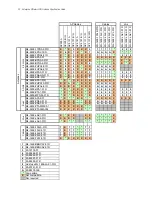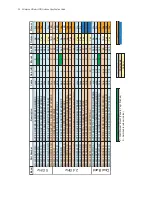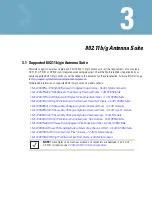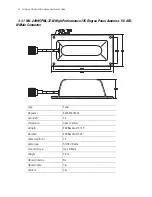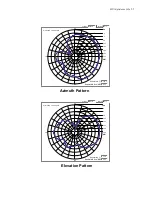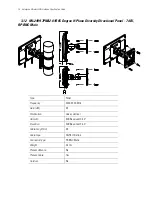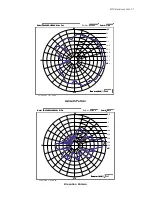
1-6
Enterprise Wireless LAN Antenna Specification Guide
1.1.3 Indoor and Outdoor Antennas
One important aspect of an antenna is whether it is weather sealed to protect it from the environment
Because of this extra protection, outdoor antennas are typically more expensive than those rated for indoor
use. Outdoor antennas can be used for indoor applications, such as freezers and cooler where moisture is
common. Outdoor antennas can be used for indoor applications, but indoor applications should not be used
in outdoor applications.
One common distinction of outdoor antennas is the connector. Since lightning protection is always advised
for outdoor antennas, these antennas typically have Type N Male to directly attach the lightning arrestor.
This is tru of the 2.4 GHz, 5 GHz, and the dual-band outdoor antennas.
1.1.4 Spectrum and Part Number Designations
The antennas listed in this document are ultimately referenced by part number. A numerical sequence is used
within each antenna’s part number to identify the spectrum supported by the antennas.
• The antenna part numbers with a 2499 indicates a 2.4 GHz antenna. For more informaion on the 2.4 GHz
antenna suite, see
802.11b/g Antenna Suite on page 3-1
.
• The antenna part numbers with a 5299 indicates a 5 GHz antenna. For more informaion on the 2.4 GHz
antenna suite, see
802.11a Antenna Suite on page 4-1
.
• The antenna part numbers with a 2452 indicates a dual band antenna (2.4GHz and 5 GHz). For more
informaion on the 2.4 GHz antenna suite, see
2.4GHz - 5.2GHz Dual Band Antenna Suite on page 5-1
.
1.1.5 Extended AP to Antenna Cable Lengths
Most indoor antennas are intended to be mounted directly to the AP's connectors. Some mounting
arrangements call for positioning the AP a significant distance away from the antenna due to serviceability
or other reason. In these situations, various adapters and cable extensions are required.
In these situations be mindful of:
• The connector on the AP
• The connector on the Antenna
• The spectrum being implemented
• Signal loss due to multiple connectors and long cable lengths
Combinations of these attributes present different parts required to complete the connection. The Product
Compatibility matrix in addresses the parts required to make a proper connection. For more information, see
on page -First Page
.
Summary of Contents for AP 5131 - Wireless Access Point
Page 16: ...1 10 Enterprise Wireless LAN Antenna Specification Guide ...
Page 46: ...3 26 Enterprise Wireless LAN Antenna Specification Guide ...
Page 60: ...4 14 Enterprise Wireless LAN Antenna Specification Guide ...
Page 70: ...5 10 Enterprise Wireless LAN Antenna Specification Guide ...
Page 80: ...7 6 Enterprise Wireless LAN Antenna Specification Guide ...
Page 110: ...11 12 Enterprise WLAN Antenna Specification Guide ...
Page 113: ......


















